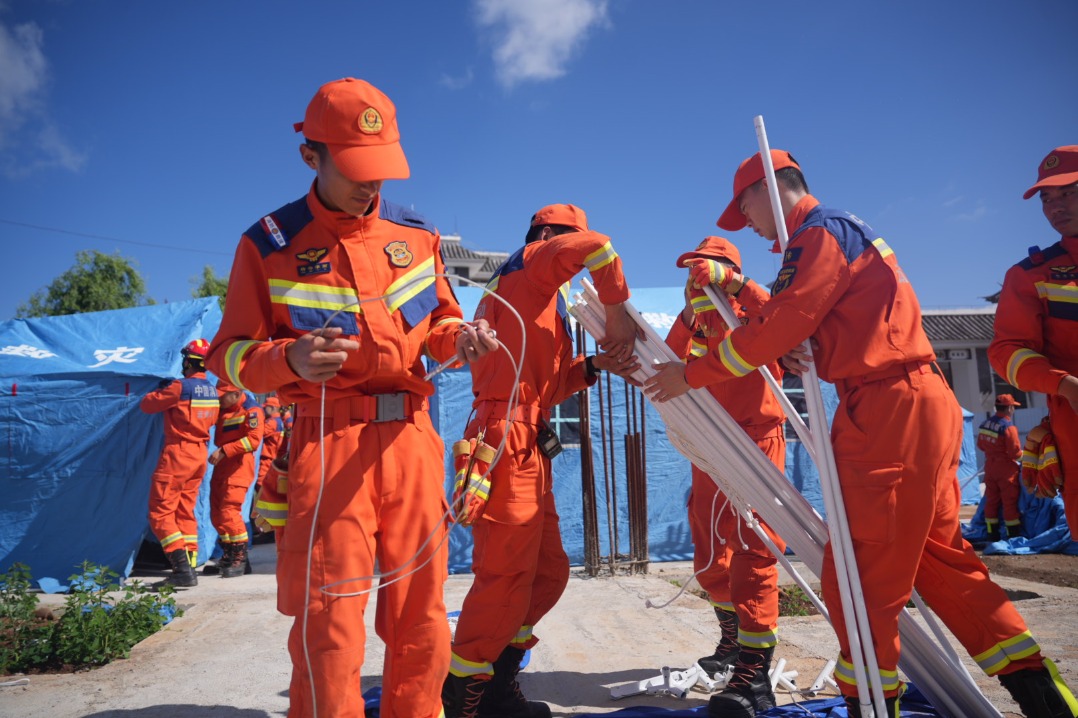Researchers develop novel implant for blind

A joint research team from Shanghai's Fudan University has developed an innovative retinal prosthesis using a novel optoelectronic material, offering hope of restoring vision to the blind after implantation in the eye.
The tiny, self-powered implant has been successfully tested on blind mice and non-human primates, demonstrating its efficacy, the team said.
Wang Shuiyuan, one of the lead researchers, said the prosthesis replaces apoptotic photoreceptor cells in the retina. When exposed to light, it generates a small electric current that activates surviving nerve cells.
"This method is suitable for cases of acquired blindness," said Wang, who is with the College of Integrated Circuits and Micro-Nano Electronics of Fudan University.
The implant requires no external power source and can be inserted through minimally invasive surgery, the researchers said.
A paper on the project was published on the website of the journal Science on Friday. The research involved scientists from the College of Integrated Circuits and Micro-Nano Electronics of Fudan University, the Institutes of Brain Science of Fudan University and the Shanghai Institute of Technical Physics of the Chinese Academy of Sciences.
"Notably, the system eliminates the need for external power sources, enabling minimally invasive subretinal implantation without requiring bulky auxiliary equipment," a peer review of the paper noted.
The prosthesis uses a tellurium nanowire network and consists of a base and nanowires. Laser technology is used to cut the implant into pieces as small as one-twentieth of a fingernail, with the number of implants tailored to individual needs.
Zhang Jiayi, a researcher from the Institutes of Brain Science, said lab tests showed that blind mice that had previously relied on touch and smell developed light sensitivity after implantation.
"In our designed experiments, the mice were able to identify rewarded triangular patterns over circular ones," Zhang said.
The researchers said no adverse reactions were observed in non-human primate models six months after implantation, laying the foundation for future clinical applications.
They also reported that the device has the highest optical current density so far and enables broad spectral coverage for visual reconstruction and enhancement.
The prosthesis extends the user's visual perception into the infrared spectrum at 940 and 1,550 nanometers. It covers a range from 470 to 1,550 nanometers, far beyond the natural range of human vision of 380 to 780 nanometers.
"This means that this next-generation super-vision prosthesis technology could potentially push the boundaries of natural human vision limits," Wang said.
The team said tests showed that animals gained "super vision" with the device, enabling them to perceive infrared light and recognize infrared patterns.
A future direction for the research is to explore ways to enhance the speed and precision of visual information processing in living organisms, said Zhang.
- Researchers develop novel implant for blind
- Tough steps help reduce green cases
- Pineapple leaves turn into fabrics in Zhanjiang
- Hospitals nationwide to offer pain-free childbirth
- Enhanced measures put in place to help students attending gaokao
- Professor witnesses ottelia acuminata bloom again in Erhai Lake, SW China



































